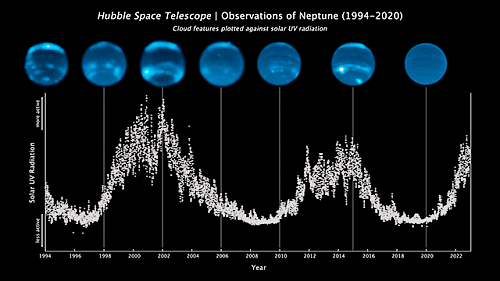Sunspot update: Activity rises in September but not significantly
Another month has passed, and it is once again time to post my annotated graph of NOAA’s monthly update of its graph that tracks the number of sunspots on the Sun’s Earth-facing hemisphere. The new graph is posted below, with several additional details to provide some larger context.
Last month we saw a drastic drop in August of sunspot activity, suggesting that the next maximum might possibly have been reached, though many months earlier than predicted. This month’s graph below, which shows an increase in activity in September but still well below the highs seen in June and July, strengthens that conclusion.
» Read more
Another month has passed, and it is once again time to post my annotated graph of NOAA’s monthly update of its graph that tracks the number of sunspots on the Sun’s Earth-facing hemisphere. The new graph is posted below, with several additional details to provide some larger context.
Last month we saw a drastic drop in August of sunspot activity, suggesting that the next maximum might possibly have been reached, though many months earlier than predicted. This month’s graph below, which shows an increase in activity in September but still well below the highs seen in June and July, strengthens that conclusion.
» Read more

